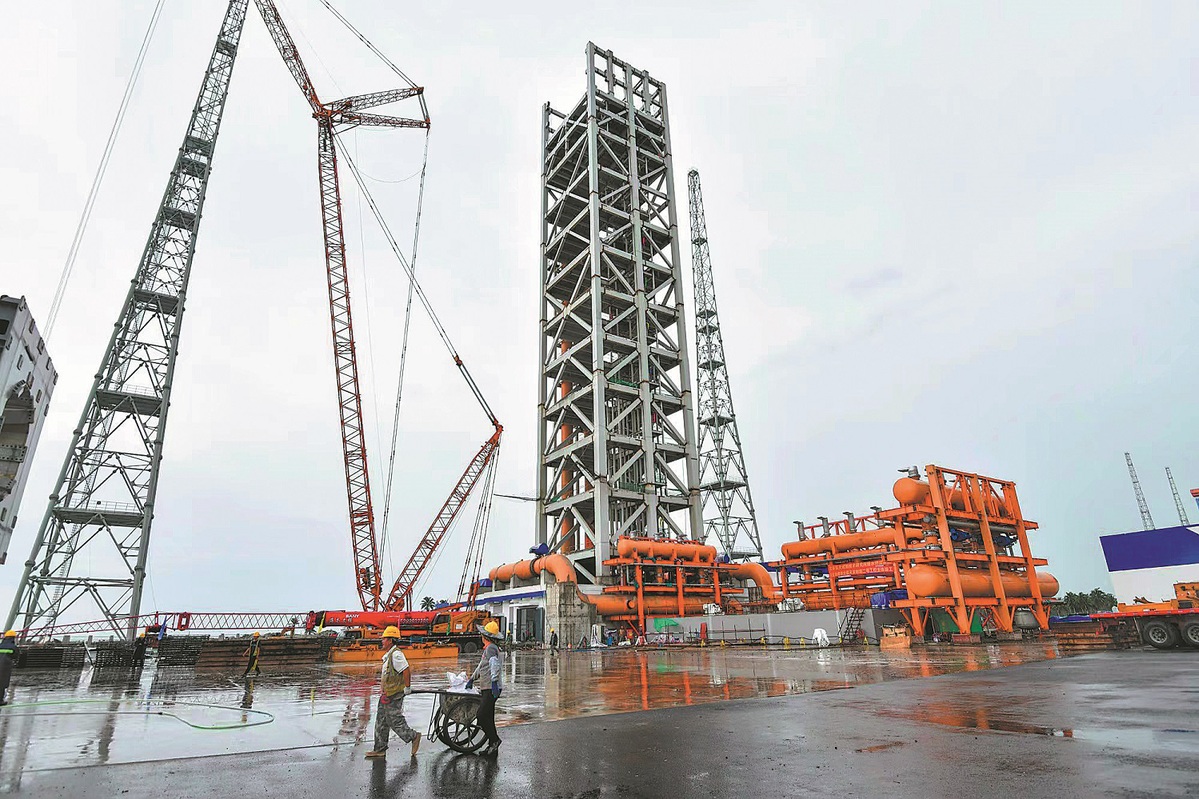
Construction of the Hainan International Commercial Aerospace Launch Center has been completed in Wenchang, a coastal city in Hainan province, after nearly two years of work, the center said in a news release.
The center's second launch service tower was completed on Thursday, and engineers have begun to prepare it for its maiden launch mission — the debut flight of the Long March 12 carrier rocket.
Construction of the No 2 tower started in October 2022. It is capable of servicing more than 10 types of liquid-propellant carrier rockets, including those in the Long March family and models developed by private companies, the center said.
The No 1 service tower was completed in late December, and is specifically tasked with servicing Long March 8 carrier rockets.
The center is a joint venture of the Hainan provincial government and three State-owned space conglomerates — China Aerospace Science and Technology Corp, China Aerospace Science and Industry Corp, and China Satellite Network Group. Construction, which began in July 2022, was undertaken by China Aerospace Construction Group.
When put into operation, the complex will become the fifth ground-based launch complex in China and the first dedicated to serving commercial space missions — generally paid for by a business entity — rather than government-funded programs.
The Wenchang Space Launch Center, the other launch complex in Hainan, is, like the three other such centers in China — Jiuquan, Taiyuan and Xichang — administered by the central government and primarily tasked with serving State programs such as lunar explorations and manned spaceflights.
Developed by the Shanghai Academy of Spaceflight Technology, a subsidiary of China Aerospace Science and Technology Corp, the Long March 12 will be the latest model in the Long March family and will become the first Chinese rocket with a diameter of 3.8 meters — wider than the 3.35-meter diameter of most Chinese rockets. It will have two stages with a combined height of more than 60 meters.
Propelled by six liquid oxygen-kerosene-fueled engines, the model will be capable of transporting spacecraft with a combined weight of at least 10 metric tons to a low-Earth orbit or six tons of satellites to a typical sun-synchronous orbit at an altitude of 700 kilometers, according to designers.
zhaolei@chinadaily.com.cn

